 W
WBasque cuisine refers to the cuisine Basque Country and includes meats and fish grilled over hot coals, marmitako and lamb stews, cod, Tolosa bean dishes, paprikas from Lekeitio, pintxos, Idiazabal sheep's cheese, txakoli, and Basque cider.
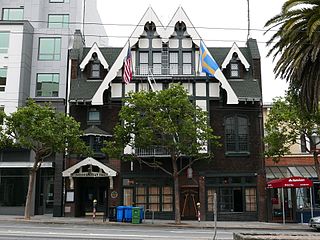 W
WAaxte is a Basque tapas bar and restaurant in San Francisco, California in the United States.
 W
WAkelarre is a Basque restaurant opened in 1974 in Igeldo, Gipuzkoa, that has achieved three Michelin stars. The restaurant is known for its local seafood.
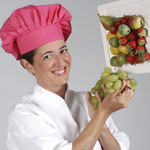 W
WEva Arguiñano is a Spanish chef and television presenter.
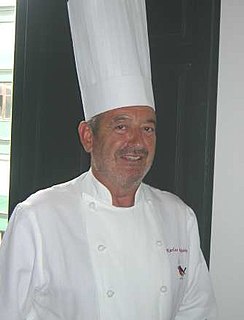 W
WKarlos Arguiñano Urkiola is a Spanish chef, popular TV presenter and producer, and Basque pelota businessman.
 W
WArzak is a restaurant in San Sebastián, Spain. It features New Basque Cuisine. In 2008, Arzak's owner and chef, Juan Mari Arzak, was awarded the Universal Basque award for "adapting gastronomy, one of the most important traditions of the Basque Country, to the new times and making of it one of the most innovative of the world".
 W
WJuan Mari Arzak Arratibel is a Spanish chef, the owner and chef for Arzak restaurant. He is considered to be one of the great masters of New Basque cuisine. He describes his cooking as "signature cuisine, Basque cuisine that's evolutionary, investigatory, and avant-garde."
 W
WAxoa is a typical Basque dish prepared with mashed veal, onions, tomatoes sauté and flavoured with red Espelette pepper.
 W
WMartín Berasategui Olazábal is a Spanish chef expert in Basque cuisine and owner of an eponymous restaurant in Lasarte-Oria (Gipuzkoa), Spain. Since 2001 it has been awarded three Michelin stars. He holds twelve stars in total, more than any other Spanish chef.
 W
WBiko is a Basque restaurant in Mexico City specialising in experimental molecular gastronomy owned and operated by Basque chefs Bruno Oteiza and Mikel Alonso.
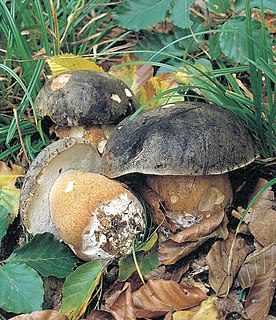 W
WBoletus aereus, the dark cep or bronze bolete, is a highly prized and much sought-after edible mushroom in the family Boletaceae. The bolete is widely consumed in Spain, France, Italy, Greece, and generally throughout the Mediterranean. Described in 1789 by French mycologist Pierre Bulliard, it is closely related to several other European boletes, including B. reticulatus, B. pinophilus, and the popular B. edulis. Some populations in North Africa have in the past been classified as a separate species, B. mamorensis, but have been shown to be phylogenetically conspecific to B. aereus and this taxon is now regarded as a synonym.
 W
WA bota bag is a traditional Spanish liquid receptacle, used mainly as a wineskin. It is often made out of leather, and is typically used to carry wine, although any liquid can be filled into it. Often referred to as a canteen.
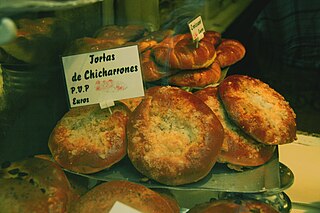 W
WA chanchigorri cake, also spelled txantxigorri or chalchigorri, is a Spanish pastry, common in the cuisine of Navarre. These desserts have a rounded shape. They are traditionally made at the time of pig slaughter, and their main ingredients are fried pork, lard, bread dough and sugar. They are usually served warm and are mainly marketed in the autumn months.
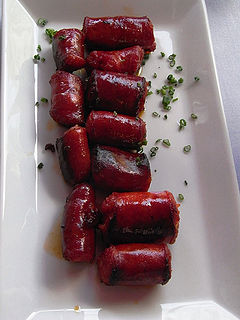 W
WChistorra is a type of fast-cure sausage from Aragon, the Basque Country and Navarre, Spain. It can be considered a special type of chorizo. It is made of minced pork, or a mixture of minced pork and beef, is encased in either lamb tripe or plastic and has a fat content that varies between 70 and 80%. The sausage is flavoured with garlic, salt and paprika, which gives it a bright-red colour. It is usually baked, fried or grilled and often accompanies other dishes, sometimes as part of tapas. The final cured product tends to be thinner than traditional chorizo or sausage, with a diameter of approximately 25 mm. The sausages average 40 cm (16 in) in length, though there are cases when they reach up to 1 m long.
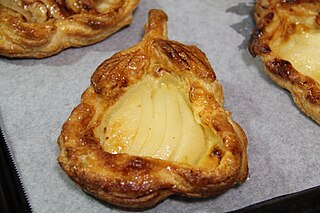 W
WA croustade is a French culinary term meaning a crust or pie-crust of any type. They are usually made of flaky pastry or puff pastry, but there are also bread croustades, potato croustades, rice, semolina and vermicelli croustades, among others.
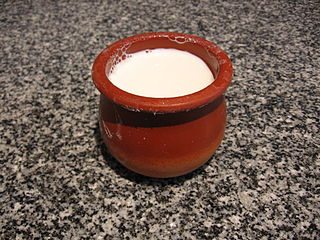 W
WCuajada is a cheese product. Traditionally it is made from ewe's milk, but now it is more often made industrially from cow's milk. It is popular in the northern regions of Spain. In Latin America it is popular in Colombia and in the Central American countries of El Salvador, Honduras and Nicaragua.
 W
WEels are elongated fish, ranging in length from 5 centimetres (2.0 in) to 4 metres (13 ft). Adults range in weight from 30 grams to over 25 kilograms. They possess no pelvic fins, and many species also lack pectoral fins. The dorsal and anal fins are fused with the caudal or tail fin, forming a single ribbon running along much of the length of the animal. Most eels live in the shallow waters of the ocean and burrow into sand, mud, or amongst rocks. A majority of eel species are nocturnal and thus are rarely seen. Sometimes, they are seen living together in holes, or "eel pits". Some species of eels live in deeper water on the continental shelves and over the slopes deep as 4,000 metres (13,000 ft). Only members of the family Anguillidae regularly inhabit fresh water, but they too return to the sea to breed.
 W
WEguren Ugarte is a 140-year-old landmark family-owned winery in the Rioja Alavesa territory of the Basque Country, northern Spain. Founded in 1870 by Anastasio Eguren, it is known as one of the longest-standing vineyards in Europe.
 W
WThe Espelette pepper is a variety of Capsicum annuum that is cultivated in the French commune of Espelette, Pyrénées-Atlantiques, traditionally the northern territory of the Basque people. On 1 June 2000, it was classified as an AOC product and was confirmed as an APO product on 22 August 2002.
 W
WGâteau Basque is a traditional dessert from the Northern Basque region of France, typically filled with black cherry jam or pastry cream. Gâteau Basque with cream is more typical in the Southern Basque region of Spain.
 W
WGoxua is a typical dessert from the Basque Country, especially from Vitoria-Gasteiz. Gasteiz pastry chef Luis Lopez de Sosoaga claims to have first created the dessert in 1977.
 W
WIdiazabal is a pressed cheese made from unpasteurized sheep milk, usually from Latxa and Carranzana sheep in the Basque Country and Navarre. It has a somewhat smokey flavor, but is usually un-smoked.
 W
WIntxaursaltsa is a typical dessert of the Basque Country, where it is traditionally eaten as part of the Christmas Eve feast. Intxaursaltsa is similar in appearance to natilla, and is made from walnuts, milk, sugar and cinnamon.
 W
WLuis Irizar Zamora is one of the founding members of the New Basque Cuisine.
 W
WIrouléguy AOC wines come from Lower Navarre in the Northern Basque Country, France and are usually considered as part of the wine region of South West France (Sud-Ouest). They are named after the village of Irouléguy and are the only wines with AOC certification in the Northern Basque Country. Irouléguy wines are often referred to as coming from "the smallest vineyard in France, the biggest in the Northern Basque Country".
 W
WIzarra means “star” in Basque, and is a brand of liqueur that was created in 1906 in Hendaye, in the Basque Country, by the botanist and pharmacist Joseph Grattau.
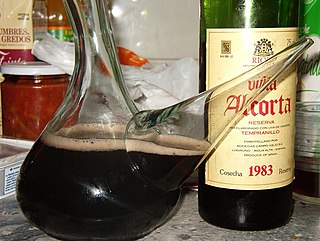 W
WKalimotxo or calimocho is a drink consisting of equal parts red wine and cola-based soft drink. The concoction dates back to the 1920s in Spain, but was relatively uncommon as Coca-Cola wasn't manufactured in the country at that time. The first Coca-Cola factory opened in Spain in 1953, and the drink was "reborn" and given its current name in 1972. It has since become a classic of the Basque Country region.
 W
WKokotxas is a traditional Basque fish stew. The dish is made from stewed fish necks/dewlap served with a white wine, garlic, flour, and olive oil sauce. In Basque Country the dish is served with a green sauce made from olive oil, flour, garlic, and parsley.
 W
WMugaritz is a well-known restaurant in Rentería, Guipúzcoa (Spain), which opened in March 1998 under the management of Chef Andoni Aduriz. It is considered one of the world's best restaurants since 2006 according to Restaurant Magazine and has been recently been ranked fourth in this toplist.
 W
WOssau-Iraty is an Occitan-Basque cheese made from sheep milk.
 W
WPatxaran is a sloe-flavoured liqueur commonly drunk in Navarre, Basque Country, and other areas of Spain. It is usually served as a digestif either chilled or on ice.
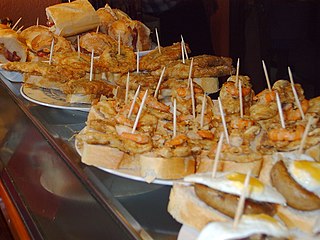 W
WA pincho, pintxo or pinchu is a small snack, typically eaten in bars, traditional in northern Spain and especially popular in the Basque country, Navarre, La Rioja, Cantabria, and Asturias. They are usually eaten in bars or taverns as a small snack while hanging out with friends or relatives; thus, they have a strong socializing component, and in the Basque country and Navarre they are usually regarded as a cornerstone of local culture and society. They are related to tapas, the main difference being that pinchos are usually 'spiked' with a skewer or toothpick, often to a piece of bread. They are served in individual portions and always ordered and paid for independently from the drinks. It is not impossible, however, to have the same item called "pincho" in one place and "tapa" in another.
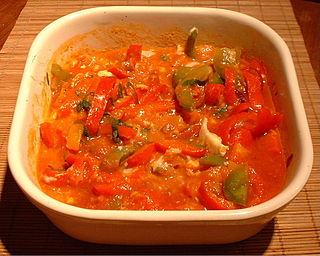 W
WPiperade or Piperrada, from piper, is a typical Basque dish prepared with onion, green peppers, and tomatoes sautéd and flavoured with red Espelette pepper. The colours coincidentally reflect the colours of the Basque flag. It may be served as a main course or as a side dish. Typical additions include egg, garlic or meats such as ham.
 W
WPisto is a Spanish dish originally from the Region of Murcia, Castilla La Mancha and Extremadura. It is made of tomatoes, onions, eggplant or courgettes, green and red peppers and olive oil. It resembles ratatouille and is usually served warm as a starter or to accompany another dish. It is often served with bread, a fried egg on top or with pieces of cured ham. It is also used as the filling for pasties and tartlets (empanadillas).
 W
WRiojan Style Potatoes or Patatas a la Riojana is a dish from Spanish cuisine, popular in the counties of Rioja and Álava in the Basque region of Spain. It's made with bell peppers, chorizo sausage and potatoes. The sauce is simple, and thickened by the potato starch. Other ingredients like bay leaves, pimenton and mushrooms may be added. Red wines complement this dish.
 W
WPedro Subijana Reza is a Spanish chef who runs the restaurant Akelarre in San Sebastián, Spain. In 2006 his restaurant received its third Michelin star.
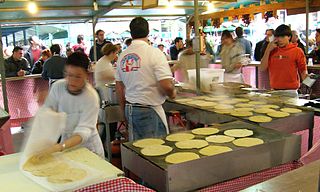 W
WTalo or Talau is a typical food of the Basque Country, similar to the traditional corn tortilla of Mesoamerica, made of corn flour, water and a bit of salt. It is round and is cooked in a warm metal plank, named a talo burni. It can be eaten alone, with various toppings, and is also used as a wrap for various foods.
 W
WTuna pot, marmitako in Basque Country and marmita, marmite or sorropotún in Cantabria is a fish stew that was eaten on tuna fishing boats in the Cantabrian Sea. Today it is a simple dish with tuna, potatoes, onions, peppers, and tomatoes.
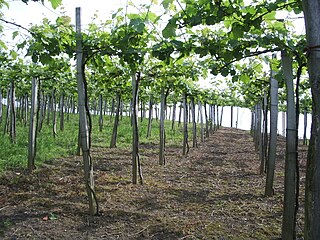 W
WTxakoli or chacolí is a slightly sparkling, very dry white wine with high acidity and low alcohol content produced in the Spanish Basque Country, Cantabria and northern Burgos in Spain. Further afield, Chile is also a minor producer.
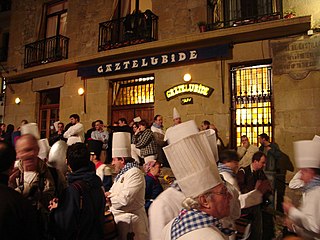 W
WA Txoko is a typically Basque type of closed gastronomical society where people come together to cook, experiment with new ways of cooking, eat and socialize. The most traditional ones are only open to male members. They are very popular institutions; the town of Gernika, Spain, for example, has approximately 15,000 inhabitants and nine txokos with some 700 members in total.